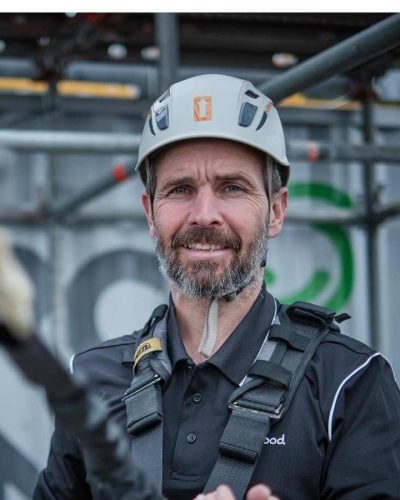Standard Helicopter Underwater Escape Training with CA-EBS Refresher (Theory Digital Delivery)
To refresh students knowledge and skills in helicopter underwater escape techniques including preparing for impact and emergency egress with and without push out windows or doors, and with or without a compressed air emergency breathing system (CA-EBS).
Certification
A Standard HUET with CA-EBS Refresher certificate will be awarded to students who successfully complete the theory and practical components of the course.Course Content
Learning Outcomes
At the end of this course students will be able to:
- demonstrate knowledge of CA-EBS systems in helicopter emergency situations.
- identify hazards associated with CA-EBS.
- undertake a pre-flight inspection of CA-EBS.
- demonstrate escape and emergency techniques for a helicopter in the sea.
The course focuses on:
- helicopter emergencies; preparatory actions prior to ditching including using CA-EBS.
- egress from a submerged and capsized helicopter simulator with and without windows or doors.
- correct use of CA-EBS system underwater.
Course structure
The course is a combination of theoretical and practical sessions delivered at our centre. Students are assessed continuously .
Alternative delivery method:
Theoretical learning modules leading to a formal assessment are also available online before attending the centre to undertake practical activities. Refer below.
Course prerequisites
Student must already hold Unit Standard 32095.
Medical requirements
Prior to undertaking the course we must be provided with a completed Wood Training HUET with CA-EBS (Non OPITO) Medical Self-declaration and Screening form.
If you answer “yes” to any of the questions in this form we recommend you talk to a registered medical practitioner to ascertain your fitness for the training OR provide a valid recent medical certificate.
We must receive these documents no later than 48 hours before course commencement. If not received within this timeframe you may be declined entry to the course. This decision will be taken on a case by case basis.
Assessment process
Practical assessments which takes place when student is ready/has shown that they can perform all tasks required. Assessment involves submerged and capsized escapes with and without windows or doors followed by inflation of a lifejacket and donning of a spray hood. Students also don a double strop and are winched.
If a student is deemed not competent, the process for reassessment will be advised by the instructor.
Revalidation/Refresher
To maintain current competency, it is recommended that refresher training occurs regularly. Depending on the industry you work in this may vary. Current Wood Training recommendation is every two years.
Items to bring
- Photo ID.
- Appropriate streetwear can be worn.
- Swimming attire and towel.
- Thermal top to wear under dry suit (optional).
- Personal toiletries (for shower).
- Water bottle.
Post training warning
There is an increased risk of decompression sickness if you fly at altitude after breathing compressed air underwater. As per the Divers Alert Network (DAN) published Revised Flying After Diving Guidelines for Recreational Diving – May 2002, a minimum pre-flight surface interval of 12 hours is recommended.
Students should take this into consideration when arranging for travel after course completion and refer to their company HSE department for advice.
Course Length
1 Day
Location
Digital learning prior to attending course at 26 Manadon Street New Plymouth
Price
$785 + GST per person
Group rates available
Book Now
Book instantly online
Meet The Trainers

Stephen Ritson
Stephen Ritson
Steve’s background includes serving with the Royal Marines Commando, a teacher of Art and Design, Fire Fighter (NZFS), Ship Security Officer maintaining security. His personal passion lies with mountaineering and climbing, bringing valuable rope skills and rescue to the Industrial rope access industry. Steve has a strong understanding of teams working under high pressure in high hazard and high stress environments. He holds a postgraduate Certificate in Education as well as qualifications in Training, Assessment, Rope Access and Occupation and Health and Safety.

Richard Martin
Richard Martin
Richard has been involved in training as a career since 2015, when Fonterra started an inhouse NZQA level 3 and 4 Milk Processing qualification. He was a tanker driver and dairy process management before moving into teaching. Working as a coach in this environment gave Richard the skills to support leaners in online learning as well as in person. This included delivery of technical information, assisting literacy-challenged leaners and tracking progress up to a regional level.
When talking to Richard about his teaching perspectives, he says “the student hasn’t learnt until the teacher has taught, but that doesn't define who the teacher is…. experiences are usually great teachers, by people sharing their experiences we all learn”.
Richard has had a varied work history initially training in applied art and design as well as agriculture. His time working in graphic design and print gives him a good eye for instructional material that supports his work as a trainer and online facilitator. His background as a tour driver operator and guide in New Zealand and Australia along with his agricultural experience gives him plenty of experience in the field and authentic work stories to demonstrate the importance of health and safety no matter the sector.
He continues to blend these interests of arts and the outdoors in his leisure time with cartoon work, photography, DIY and outdoor activities such as surfing and snow boarding. All of which makes him well placed to be a trainer with Wood.


